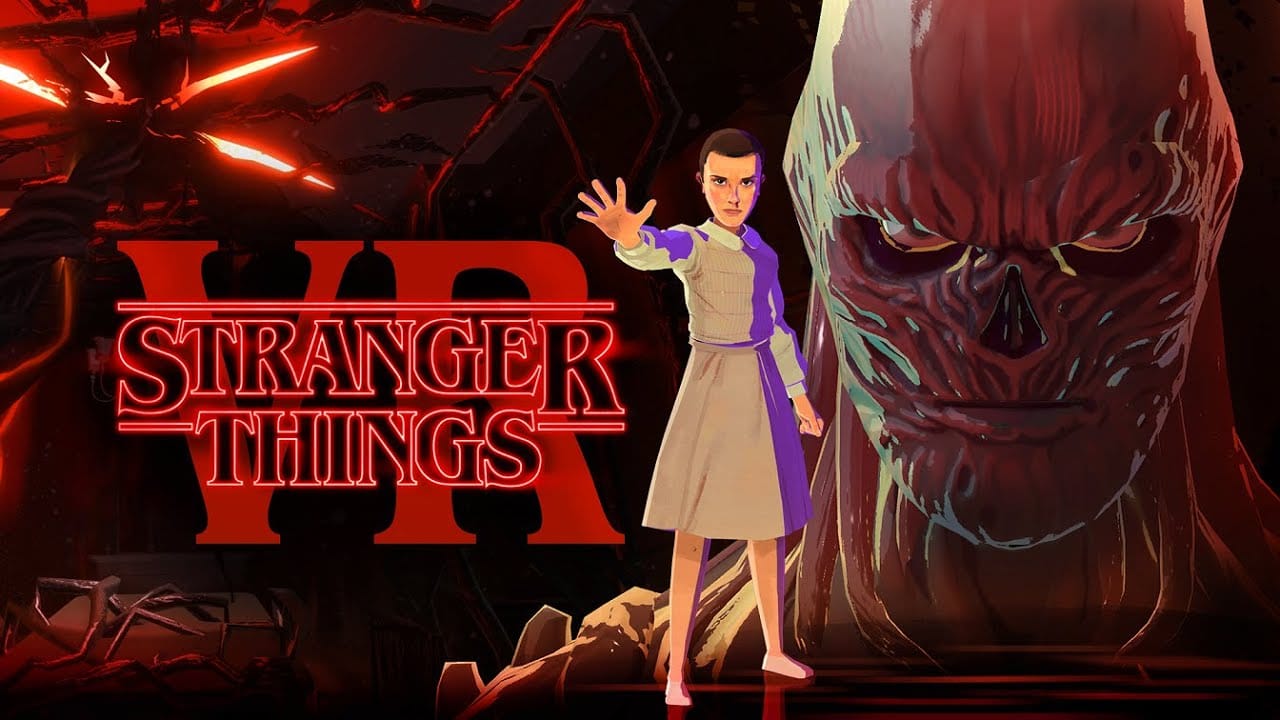Stranger Things VR offers pioneering studio Tender Claws the chance to adopt one of Netflix’ beloved properties for VR. How do they do? Here’s our review.
One of the hardest things to pull off as a developer is successfully transforming a beloved TV series or movie into a video game. We’ve seen our fair share of these licensed games fail miserably. I salute Tender Claws for tackling such a colossal task for VR and even experimental mixed reality, trying to bring iconic settings of Hawkins and the Upside Down to life in a fresh and original story.
Stranger Things VR offers an engaging storyline that plays true to the spirit of the original series, only this time you’re playing as the villain, Vecna. Unfortunately, this trip can also quickly feel repetitive or more like a nightmarish walking simulator through the Upside Down.
Stranger Things VR is mostly set in The Upside Down and does an excellent job of making you feel like part of this universe. It lets you feel a tiny slice of the twisted story of how Vecna came to be. Also, to great relief, this experience isn’t completely spent in this dark, dismal alternate dimension, because there are moments throughout where you see familiar locations and animated versions of the show’s characters.
The gameplay and movement style prove both immersive and intuitive. Controlling otherworldly vines is easy to learn and thrusting yourself high into the air feels great. Stranger Things VR’s presentation is also top-notch and looks great on Quest 3, while some nicely drawn cinematic narrative sequences made this look like a graphic novel.
I often found myself mesmerized, either by the events happening around me or by the sheer scale and perspective-shifting nature during certain segments. Some impressive audio design between the Upside Down’s eerie sounds and the iconic Stranger Things ’80s style synth-infused theme music adds to the darker, often spooky atmosphere.
The voice acting here is a mixed bag. The developers brought in Matthew Modine as Dr. Brenner and Jamie Campbell Bower as Vecna to voice their respective roles from the TV series. However, I hoped for more original dialogue from the show’s other returning characters, which was mostly presented through captured sound bites and voice overs that don’t match the original cast.
Sound Design In The Upside Down
Stranger Things VR has many positives, though it’s also far from flawless. About that nightmarish walking simulator? The game’s primary focus seems to be just moving you along to the next cinematic sequence and this becomes repetitive very quickly. For example, a core element of the game is a mechanic called mind invasions. These sequences involve you probing the minds of other characters to uncover their secrets, and they are a key part of the story. However, they often involve solving similar puzzles or overcoming the same challenges, which gets dull exceedingly fast. Combat also feels like a one-trick pony where you telekinetically grab random environmental objects and hurl them at your enemies, or grab smaller foes with telekinesis to crush them. As an 8-foot-tall villain with telekinetic powers, I wanted more combat variety, and Tender Claws could have done more.
When it comes to the story’s pacing, I felt like I was getting to the good part when it abruptly stopped and credits rolled. I stood there wondering if I had really reached the end. Stranger Things VR is broken up into nine chapters, some of which were pretty short, meaning you could likely finish the game in one dedicated play session.
Comfort
Stranger Things VR can be played seated or standing and it defaults to snap turning with a vignette that restricts your field of view during intense movements. We didn’t see any blink or teleport forward movement system for walking and the vine-movement sections can be quite intense. There is an option to take some of the game’s gesture based control sequences and assign those to either B or Y on the controllers. Tender Claws added the ability to turn off comfort settings and go with full smooth turning and no vignette for more active movements.
Mixed reality levels in Stranger Things VR are an extra bonus that adds a vaguely interesting twist to the experience. Unfortunately, they don’t live up to their potential. Since they take place in your own play space, these segments do provide a unique visual perspective, but they also don’t seem to have anything to do with the actual storyline. This makes sense because they only become playable after finishing the campaign, but presenting it that way has the effect of underscoring the feel of this addition being an absolute gimmick. These levels don’t actually impact the VR storyline in any way and, instead of using mixed reality support to continue the narrative and adapt the gameplay mechanics to your physical world, it absolutely feels more like a superficial addition.
Stranger Things VR Review – Final Verdict
Stranger Things VR is a commendable effort from Tender Claws and a nice example of VR’s potential as a storytelling medium, letting you experience Hawkins and the Upside Down in a brand new way that expands on the Stranger Things universe. Unfortunately, all that is hindered by extremely repetitive gameplay elements and poor combat.
If you’re a fan of the TV show and can look past the absence of the voice actors for some of your favorite characters, you’ll likely enjoy your time exploring Vecna’s twisted mind while traversing the Upside Down. Even if you’ve never seen the Netflix series and simply want enjoy trippy and often spooky VR experiences, you might consider giving Stranger Things VR a look.

UploadVR uses a 5-Star rating system for our game reviews – you can read a breakdown of each star rating in our review guidelines.
Editor’s note: We retracted a review of Stranger Things VR from a different author which appeared at this URL for about three hours. We apologize, and are updating our ethics policy to clearly restrict the use of text generation tools.





